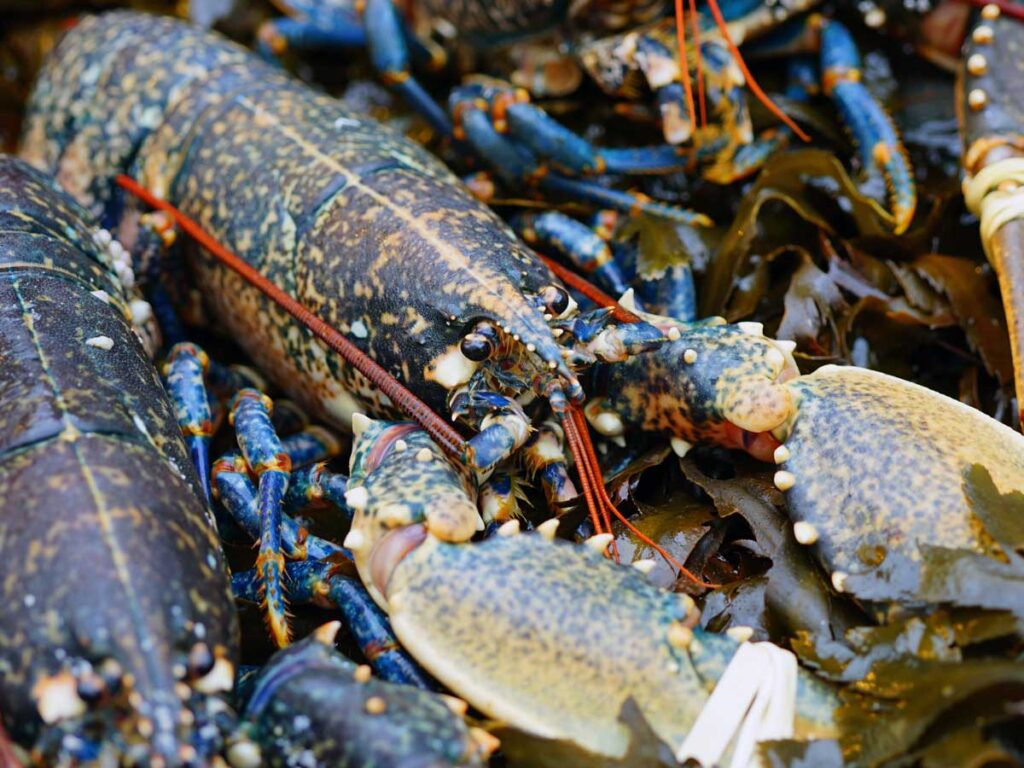
Last updated: 25 April, 2025 @ 14:58
A best practice guide for handling and dispatching live crustaceans such as lobster and crab has been published.
The guide, which is aimed at the catching, processing, retail and food service sectors of the seafood industry, is also useful for home cooks wishing to learn more about how to handle and humanely kill live crabs, lobsters, crawfish and langoustine.
Crustacean Codes of Practice
The publication, Codes of Practice for the Welfare of Crabs, Lobsters, Crawfish and Nephrops (langoustine), also provides information on how to correctly store crustaceans,
Additionally, it includes indicators of when an animal is becoming stressed, such as a lack of limb movement or no reaction when the mouthparts are touched.
How to respectfully kill crab and lobster
Perhaps of most importance to the home cook is the guidance on how to quickly and respectfully kill a live crab or lobster – with the aim of minimising the risk and extent of any pain, suffering or distress.
The guide advises against some common practices such as chilling crustaceans prior to cooking live, which it states ‘does not in itself reduce sensibility and is likely to prolong the time taken to lose sensibility’.
It also says that placing live crab, lobster, langoustine and crawfish in fresh water to cause death by ‘drowning’ will likely result in ‘pain, suffering and distress’.
Criticism of the crab and lobster welfare guide
The guide was introduced following the UK government recognising that decapod crustaceans are sentient animals and do ‘feel’ things such as pain, suffering and distress.
However, the document has drawn some criticism.
The animal welfare organisation Crustacean Compassion – which was consulted during the two-year process to develop to code – said that with awareness around crustacean welfare growing, seafood businesses needed to keep up with consumers’ expectations.
Crustacean welfare: ‘setting a higher bar’
Dr Ben Sturgeon, CEO of Crustacean Compassion said: “With public awareness around decapod welfare growing rapidly, we’re seeing more retailers respond by setting a higher bar for their suppliers.
“People want to feel good about the food they eat, and they expect supermarkets to ensure the highest standards of animal welfare.
“Companies such as Marks & Spencer and Waitrose are starting to insist on higher welfare crustacean products for their customers, so suppliers who don’t meet those standards will soon be frozen out.”
Codes of Practice for the Welfare of Crabs, Lobsters, Crawfish and Nephrops
Codes of Practice for the Welfare of Crabs, Lobsters, Crawfish and Nephrops (langoustine), published by Seafish, the Crab & Lobster Management Group and the Shellfish Association of Great Britain, is available for download here.
In response to the guide, Fish Face Seafood Blog has updated its advice for cooking and preparing both crab and lobster.
Learn more about Crustacean Compassion here.